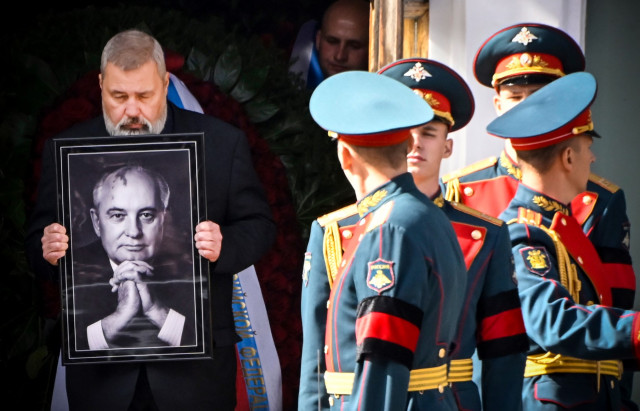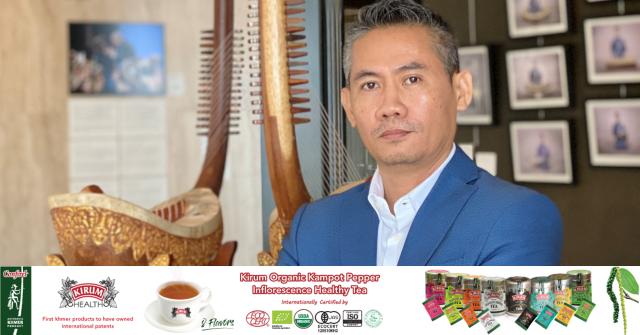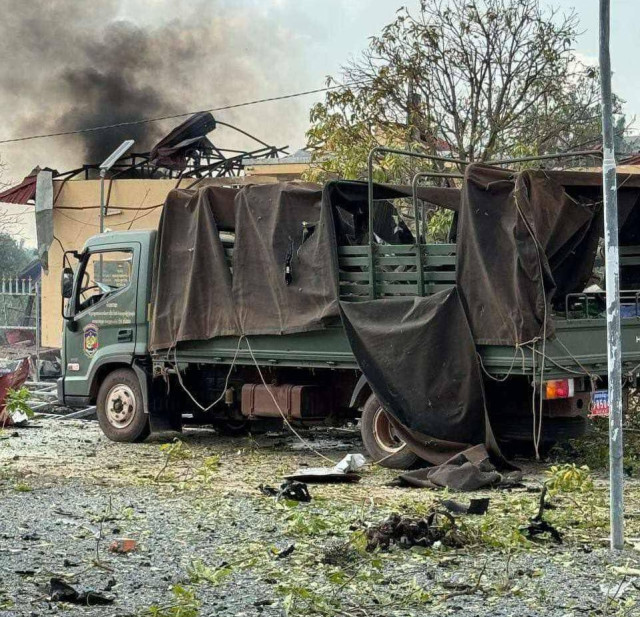Khmer Classical Dancers of Three Decades ago Are Portrayed behind the Scene in the Photo Exhibition “Spirit of the Dance – A Reunion”

- By Michelle Vachon
- November 24, 2023 3:05 PM
PHNOM PENH — In early 1991, as U.S. photographer James Wasserman was waiting in Bangkok to catch a flight for Phnom Penh, he heard that a seat was available on the plane scheduled to leave that day.
“At the time, you didn’t know whether [the next flight] would be full or if they would cancel the flight,” he said. “So, when I found out there was a flight available that I could get on—I was already in Thailand—I took it. So I arrived early and they wouldn’t let me out of the airport.”
While efforts were being made to put an end to the conflict, Cambodia was still at war. The Khmer Rouge based in Thailand continued assault on the Phnom Penh government forces even though peace negotiations were being conducted through diplomats from several countries. It would only be in October 1991 that the signing of the Paris Peace Agreements would put an end to the conflict.
So Wasserman was coming to a country still at war and, the means of communicating being what they were at the time, he had no way of letting anyone know in Phnom Penh he would arrive early, he said.
“The Phnom Penh airport was more like a military airport at that point,” he said. “You just walked out on the tarmac…there was a wooden waiting room with a bench, some guys in military greens officiating.” Since he was not expected that day, the government person charged to escort him was not there, he said.
Fortunately, Wasserman had met a person on the plane who knew Toni Shapiro-Phim who had asked him to come to the country to photograph Khmer classical dancers. That person volunteered to let her know he was at the airport. Shapiro-Phim eventually arrived with the government official assigned to escort him, and he was able to leave the airport.
Wasserman would spend the following weeks taking photos of Khmer classical dancers in Phnom Penh to illustrate Shapiro-Phim’s research. Some of the photos he took at the time are currently exhibited at the Bophana Audiovisual Resource Center in Phnom Penh. He named the series that features students and teachers, dancers young and old, rehearsing or discussing among themselves “Spirit of the Dance – A Reunion.”
Shapiro-Phim is a cultural anthropologist and dance ethnologist whose work has focused on the relationship between the arts, migration and violence including genocide. “I first arrived in Cambodia in 1990 to undertake research for a PhD dissertation in cultural anthropology,” she said. “I was focusing on the relationship between dance and war and displacement.
“I felt quite compelled by the potency of Cambodian classical dance in the face of cultural disruption and loss, and by the stories of those who taught, studied and performed this art,” Shapiro-Phim said. “I had no documentation equipment myself except for a small camera—I only had a tiny grant to support my stay—and felt that the dancers deserved to have pictures taken that were as stunning and complex as they are. I invited James Wasserman to join me the following year…knowing that his work is nuanced, sensitive, and aesthetically rich.”
But what he was first asked to photograph after leaving the airport was a wedding. Shapiro-Phim who had not been expecting him that day had a Cambodian wedding to attend. As it turned out, the photographer who was to take photos during the ceremony and reception could not do so, and Wasserman was asked to replace him. “That was such a joy but such a mystery to me because I knew nothing about Cambodian culture, rituals, customs,” he said. “So, to be suddenly entrusted into that role was just amazing.”
 Khmer classical dancer Sophiline Cheam gets ready with the help of a teacher prior to a performance. She was part of the first group of students dancers to graduate when the dance school—today’s Royal University of Fine Arts—reopened after the defeat of the Khmer Rouge. Photo: James Wasserman
Khmer classical dancer Sophiline Cheam gets ready with the help of a teacher prior to a performance. She was part of the first group of students dancers to graduate when the dance school—today’s Royal University of Fine Arts—reopened after the defeat of the Khmer Rouge. Photo: James Wasserman
The following day, Wasserman was at work. He would spend the following weeks documenting dancers’ work in and out of class at what were then the School of Dance and the Schools of Music and Theater in Phnom Penh.
Based in Philadelphia in United States, Wasserman is a professional photographer who has done magazine photography, public relations work as well as some news photography. But one of his primary interests, he said, is documentary portraiture, that is, photos that reflect a person and his/her universe as can be seen in some of the photos in the exhibition.
For example, the photo of theater teacher Pring Sakhon shows him lost in his thoughts. A famed actor in the 1960s, he had been recognized during the Khmer Rouge regime and barely made it out alive. Wasserman shot him in a black-and-white photo as he was lost in his thoughts, sitting on a straight chair alone in a room.
There also is a photo featuring three generations of dancers, one in which a teacher focuses on making young women students perfectly position their hands, and another of a young boy practicing on his own those hand movements he keeps seeing his sisters practice.
“My feeling was that the imagery of dance, hand movements, the kind of bodily incarnation of it, were not just something dancers did…that the imagery and the movement were kind of all throughout Cambodian culture including Angkor Wat,” Wasserman said. “And this…told me how central dance was to the culture.”
The photos that he took in 1991 were to illustrate Shapiro-Phim’s doctorate dissertation at Cornell University in United States. Following this trip, Wasserman came back numerous times to Cambodia, usually for NGO photo projects. These ranged from a project to create a Khmer sign language for deaf children and adults, to another on the sustainable use of the environment. “I was always looking for an opportunity to come back,” he said. While he lived in Beijing from 2006 through 2016, coming to Cambodia was a short trip, which made it easy to do so more often, he said.
Wasserman also came to the country a few times to take photos for the dance company of Khmer classical dancer and choreographer Sophiline Cheam Shapiro.
In addition to being in Cambodia for the photo exhibition, Wasserman is again working on a project of Shapiro-Phim who is currently associate professor and chair of Creativity, the Arts, and Social Transformation (CAST), and director of the Program in Peacebuilding and the Arts at Brandeis University in United States—she is also assistant director of the Global Community Engagement/Samuels Center for Community Partnerships and Civic Transformation at that university.
“My current project is called Following Mekhala's Jewel,” she said. “Working with 10 Cambodian classical dancers from Canada, France, the U.S. and Cambodia, we've spent nearly two weeks interviewing each other about memories and experiences with one particularly important dancer and dance teacher…: Chea Samy. She had been a dancer in the Royal Palace, known especially for her portrayal of the goddess Moni Mekhala…Moni Mekhala holds a jeweled ball: It is the light from that jeweled ball that lives on in her students of several generations.
“Our project is highlighting her teaching and legacy,” Shapiro-Phim said. “In addition to the interviews, dancers spent hours helping each other recollect gestures, movements, and whole dances they had learned from Chea Samy. All together, we presented a workshop to students at RUFA about Chea Samy and her impact on Khmer arts and culture. We recorded the interviews and the sessions in which the dancers brought older stories and excerpts of dramas back to life. This documentation [that includes photos taken by Wasserman] will be deposited at Bophana.” The Bophana Center collects and preserves audiovisual archives of Cambodia including films, photos and sound archives from around the world.
The exhibition of James Wasserman at the Bophana Center runs through Nov. 30.
The Bophana Audiovisual Resource Center is located at 64 Street 200 in Phnom Penh.
For information https://bophana.org/
 Theater actor and teacher Pring Sokorn seems lost in his thoughts as he relaxes in-between classes in 1991. Photo: James Wasserman
Theater actor and teacher Pring Sokorn seems lost in his thoughts as he relaxes in-between classes in 1991. Photo: James Wasserman















